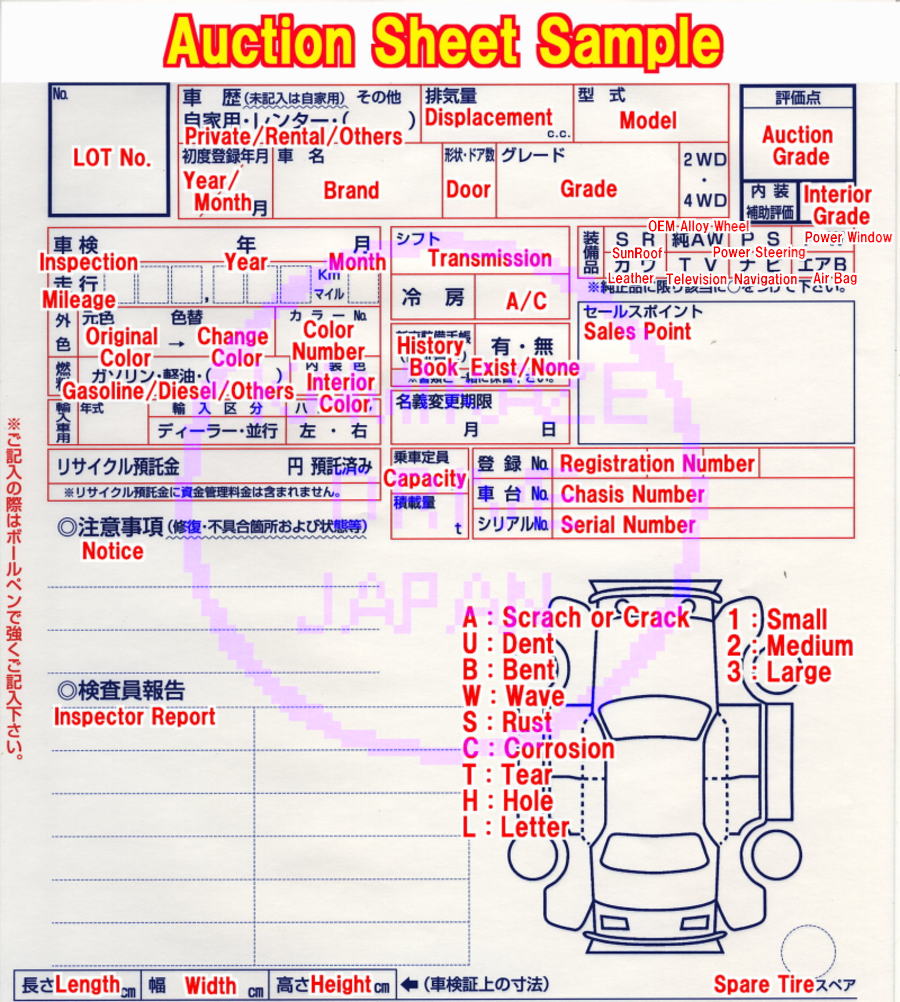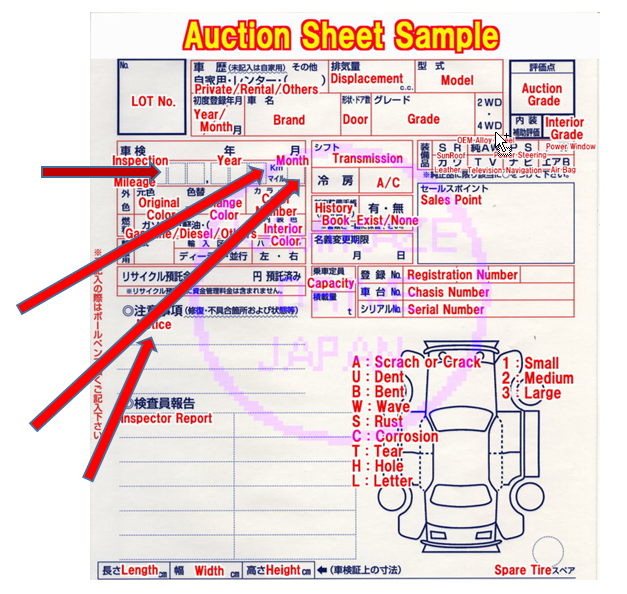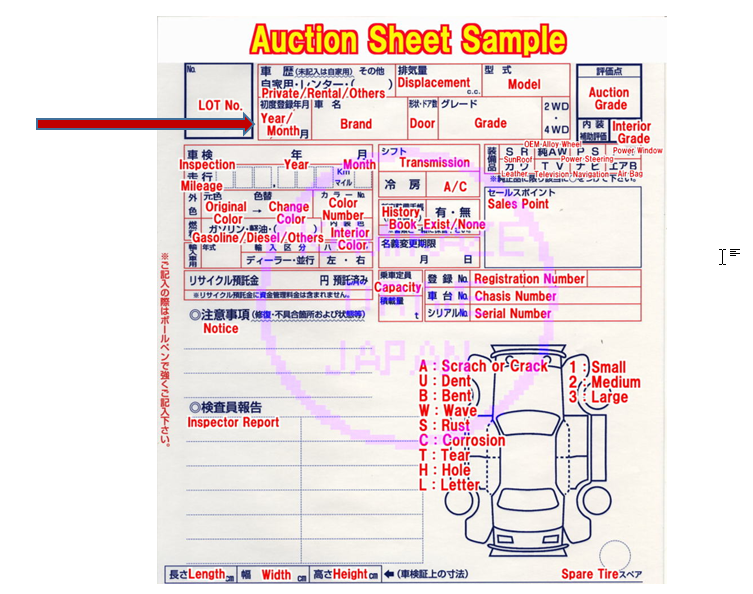Japanese Used Cars Auction Sheet (description and its translation)
Auction Sheet of the vehicle to be sold at the Japanese Auction Houses is VERY IMPORTANT and the CRUCIAL POINT while making a decision on purchase of pre-owned/used vehicles from Japan. Each auction House has its own Auction Sheet however; almost all types of auction sheets contain enough information to make a right decision on purchase of vehicles.
All Auction houses in Japan can be divided into three major Auction Houses:
Auction Sheets of Honda, Bayauc and BCN Auction Houses are not available for an open access unless you have a unique access (can be acquired from the official Japanese Car Dealer) with access code and password. Below is a sample of USS auction sheet

Sales point: contains pluses that potentially may attract more buyers. Usually the following points contain in Sales Point part: one owner, auction debut, leather seats, sunroof, push-start, allow wheels, etc.
Notice: This part may contain additional positive information, as well as a negative information. For example, among positives HDD Navigator, seat heaters, panoramic wide sunroof, spare key, etc. In some cases inspector may put negative information or problems such as engine noise, transmission working not properly. Mileage change is also reported in this part.
Inspector report: The information contained in this part is more important than information in any other parts of the auction sheet. This part contains description of interior and exterior conditions, problems, functioning of engine, transmission and others
Scratches, dents, rust, corrosion, deformation, repairs and replacements of body parts, oil drips in engine room, leakages are also reported in this part of the auction sheet
Mileage: Mileage is written very accurately until the last kilometer and is equal to the number seen from the odometer. An appropriate measurement is circled to indicate whether mileage is in kilometers or miles (for the cars made purely for the American market). There is a box on the right site of mileage line and if you see dollar ($) or star (*) mark, it means that mileage was changed backward. If Vehicle Inspector at the Auction House finds mismatch of odometer mileage and information on mileages from Car Registration Certificate (renewable and issued for two years), he writes an appropriate comment in the Notice part of the Auction sheet.

VIN (Vehicle Identification Number) or Chassis Number
Age of the Japanese cars counted from its first registration in Japan so, manufacture date written on the Auction sheet doesn’t always mean actual date of manufacture.
Buyers whose countries put age restrictions on imported cars are highly recommended to check actual manufacture date (year and month) of the car prior to purchase. You can check manufacture date of Japanese cars at Japan-Partner Inc. Web-site.
In vast majority of cases such mismatch mainly happens with western-made cars and cars with left-hand drive steering wheel. Mismatch between actual manufacture date and Auction Sheet manufacture date of the Japanese cars is also a case.

There are numerous online websites offering VIN decoders and online VIN check services. Some of them are free and some others require payments.
You can always ask Japanese car Dealer to check actual manufacture date for any single car appeared on daily Japanese Car Auctions.